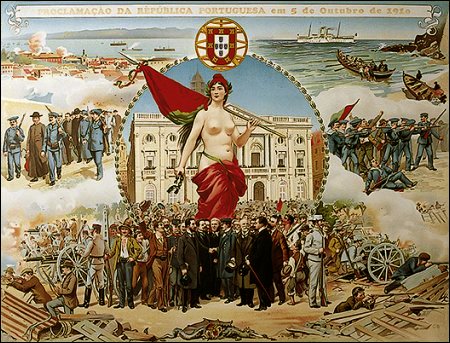 Goan visitor. The place is full of familiar names, figures and remembrances. In this context, a friend suggested that rather than think that it was Portuguese names that Goans bore, it was in fact Goan names that the Portuguese carried with them.
Goan visitor. The place is full of familiar names, figures and remembrances. In this context, a friend suggested that rather than think that it was Portuguese names that Goans bore, it was in fact Goan names that the Portuguese carried with them. Now this suggestion seems facile, ridiculous even. We would do well to remember though, that history is always an artifice, a construction of ideas, emphasizing some aspects rather than others, the direction of some flows, rather than others. Much writing and thinking, especially within
I am led to these ruminations by my thoughts this last Carnaval. Through the entire festival, I was possessed by a strange irritation; an irritation I just could not figure out. I was sure it had to do with my conviction that Carnaval is a tropical feast, and my being out of
 ‘These silly Portuguese are not doing it right’ I kept thinking, holding Goan practice to be the model-type. And indeed why not, since as I will go on to argue, the Goan Carnaval continues to approximate the ideal of what Carnaval is supposed to be. The Portuguese Carnaval simply has ‘to suck’ as a Lisboeta friend put it, because it has largely lost any context that a Carnaval ought to have.
‘These silly Portuguese are not doing it right’ I kept thinking, holding Goan practice to be the model-type. And indeed why not, since as I will go on to argue, the Goan Carnaval continues to approximate the ideal of what Carnaval is supposed to be. The Portuguese Carnaval simply has ‘to suck’ as a Lisboeta friend put it, because it has largely lost any context that a Carnaval ought to have. The hierarchy of the Goan Catholic Church may disapprove of it; and our last gasp of fun, before Lent may not quite be the spirit in which we ought to approach Lent. However, we must recognize that the fact that Lent is still taken fairly seriously provides a significant context for the Goan Carnaval. Even if we do not abstain during Lent, the Goan Catholic enters into a social context, not different from that experienced by the errant Muslim during Ramzaan. In not abstaining we recognize deep down, that it is we, the non-abstainers, who are the aberration. In the post-Christian society that
The Catholic faith in
 replaced by a more secular faith, that of the ceaseless worship of Mammon, through constant consumption and sensorial gratification. Ghalib perhaps captured it best in his couplet; ‘Hazaron qwahishein aisi ki har qwahish pe dum niklen; bahuth nikle merey armaan, phir bhi kum niklen’ (Thousands of desires, each worth dying for...many of them I have realized...yet I yearn for more...). My perspective is to be sure partial and biased. I am but a few months a Lisboeta, and live in close proximity to Bairro Alto, the veritable temple courtyard of Mammon in
replaced by a more secular faith, that of the ceaseless worship of Mammon, through constant consumption and sensorial gratification. Ghalib perhaps captured it best in his couplet; ‘Hazaron qwahishein aisi ki har qwahish pe dum niklen; bahuth nikle merey armaan, phir bhi kum niklen’ (Thousands of desires, each worth dying for...many of them I have realized...yet I yearn for more...). My perspective is to be sure partial and biased. I am but a few months a Lisboeta, and live in close proximity to Bairro Alto, the veritable temple courtyard of Mammon in Carnaval is necessarily a period of abandon, when we create a fleeting material paradise of plenty, to contrast with the daily deprivations we may suffer. As such, it is also a festival with stresses our relationship to the corporeal. When in this consumeristic world, every day is a Carnaval, and want is almost unknown, what sense in having a half week of Carnaval just once a year?

The time of Carnaval, and its relationship to the world, is an ideal. Once we are admitted into this reality, there is no new or old, authentic or pretender. When
Credits
http://www.trekearth.com/gallery/photo1087357.htm
Image No. 2 - Carnaval in Lisbon - 1907
http://xafarica.weblog.com.pt/arquivo/158121.html
Image No. 3 - The Fight Between Carnival and Lent - artwork by Pieter Bruegel
http://apor.wordpress.com/2009/02/20/%C2%ABdominica-ad-carne-levandas%C2%BB/
http://eureferendum.blogspot.com/2008/02/new-roman-empire.html







